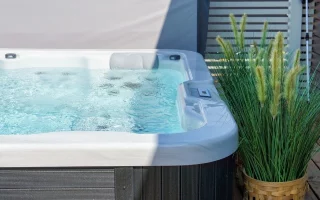The roots of sauna therapy can be traced back to ancient civilizations, where heat’s healing properties were understood and celebrated. The tradition has persisted through the centuries, taking various forms across different cultures. From the steamy banyas of Russia to the wood-lined saunas of Finland, each version of sauna therapy shares a common thread—the belief in the therapeutic attributes of heat. Today’s home sauna room époques on these past rituals, giving rise to a modern wellness tool that harnesses the ancient secrets of heat therapy for relaxation, detoxification, and mental clarity.
Understanding the Different Types of Saunas
The landscape of sauna therapy has greatly evolved, introducing various modalities to suit different preferences. Traditional steam saunas induce perspiration through hot air and steam from water pouring over heated rocks. In contrast, infrared saunas employ radiant heat, penetrating the skin more directly, inducing sweat at lower ambient temperatures. Each sauna type provides a unique experience, from a conventional sauna’s hearty embrace of moist heat to the gentle warmth of an infrared sauna. Both aim to invigorate the senses, enhance health, and transport the mind to serenity.
The Science of Heat: How Saunas Affect the Body
The science behind sauna therapy is as captivating as it is beneficial. When the body is exposed to the high heat of a sauna it enters a state of mild hyperthermia, similar to a fever. This elevated temperature can stimulate the immune system, improve circulation, and enhance metabolic processes. As the heart rate increases in response to the heat, cardiac output also heightens, effectively giving the heart a workout and potentially lowering blood pressure over time. Such cardiovascular training goes beyond mere relaxation, presenting a compelling argument for consistent sauna use as part of a holistic health regimen.
Mental Health and Relaxation Benefits
While the physiological advantages of saunas are clear, their impact on mental health is equally profound. The swathes of warmth envelop the body, cultivating a profound sense of well-being and peace. This cozy retreat from the hustle of modern life offers an ideal setting to decompress and recharge mentally. The release of endorphins- the body’s natural feel-good chemicals- further enhances relaxation during sauna sessions. This bio-chemical reaction soothes the mind and relieves tension, making saunas an excellent tool for managing stress and anxiety.
Detoxification Through Sauna Therapy
Detoxification is a term frequently associated with sauna use. While the body’s primary organ of detoxification is the liver, saunas support the natural process by promoting sweat—a primary means for eliminating dissolved solids like sodium and toxins through the skin. Though sweat is 99% water, the 1% left carries away metabolites and foreign elements, lightening the load on our biological systems. While the extent of detoxification through sweating is often debated, its supportive role is a cherished aspect of sauna therapy.
Improved Sleep and Sauna Rituals
A deep, restorative sleep can sometimes feel elusive, yet it is critical for good health. Sauna therapy can pave the way to better sleep by helping to relax muscles and lower stress hormones, which may encourage a state of calm conducive to sleep. The relaxing benefits of a heated sauna session in the evening improve sleep quality by imitating the natural drop in body temperature that tells the brain to prepare for sleep. Furthermore, it perfectly matches with our circadian cycles, encouraging a relaxed state of mind conducive to sleep.
Sauna Use for Athletic Performance and Recovery
Athletes often turn to saunas for their muscle-relaxing and recovery-accelerating benefits. The heat helps reduce muscle tension, which can alleviate pain and speed up recovery after intense workouts. It’s a perfect complement to traditional athletic recovery methods and has gained traction in competitive sports for its ability to improve flexibility and increase blood flow. The use of luxury saunas can be a game-changer for athletes by assisting in reducing injury occurrences and optimizing athletic performance.
Sauna Safety Tips and Best Practices
As therapeutic as sauna sessions can be, they must be approached with an understanding of safety fundamentals. Adequate hydration is paramount, as the body loses considerable fluid through sweat, and users should heed their body’s signals to prevent overheating. It’s recommended to limit sessions to a maximum of 20 minutes and to step out immediately if one feels dizzy or uncomfortable. People with pre-existing health issues or who are pregnant should visit a doctor before beginning sauna therapy. Following these basic tips can help guarantee that your sauna session is both fun and safe.
Designing the Perfect Home Sauna Experience
The decision to install a sauna at home brings a wealth of customization options. Architectural elements, types of wood used, and size are all personal choices that can tailor the sauna to individual preferences. Creating a space that is both inviting and practical can greatly enhance the overall sauna experience. Homeowners can enrich their sessions with elements like chromotherapy (color light therapy) or music systems. Employing the services of professionals and researching various design inspirations can result in a home sauna room that epitomizes personal wellness objectives.







